Last year we brought you our list of our favorite coasters over 50 years old that are still going strong today. Now, we’re moving forward to look at the best US coasters from the 1970s that you can still ride! We took input from the Coaster101 team across the country to ensure we had some geographic variety, and we also tried to make sure there was some variety of models on the list. We also took into account rides with major historical significance. With that said, here are our top-10 coasters from the 1970s:
10. Revolution at Six Flags Magic Mountain (1976)
We couldn’t leave the first modern looping coaster off the list, could we? Of course, along with the historical significance, it’s also a great ride. The terrain and woods surrounding it add a great vibe to the coaster that almost overshadows the loop. On top of that, the new trains with lap bars instead of over-the-shoulder restraints that were added in 2016 when the ride was refreshed have made it downright comfortable. This is the first of many coasters on our list designed by arguably the greatest coaster designer of all time, Anton Schwarzkopf.
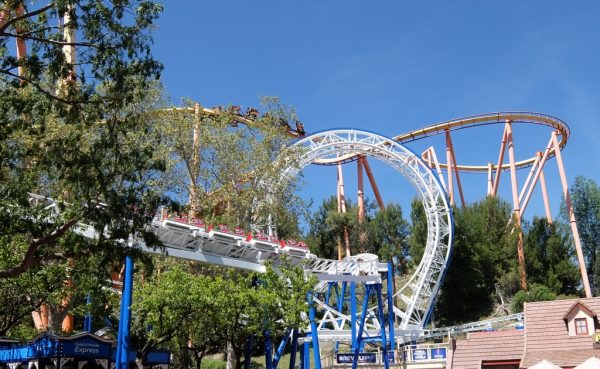
9. Montezooma’s Revenge at Knott’s Berry Farm (1978)
Another Schwarzkopf masterpiece, Montezooma’s Revenge is the oldest operating launch coaster in North America, and the only one still in its original location. The forwards and backward shuttle coaster still packs a punch even 42 years later. It accelerates to 55mph in 4.5 seconds, basically the same as much more modern launches like the Incredicoaster at Disney California Adventure or Flight of Fear at Kings Island. Plus the giant vertical loop is still maybe the most intense traditional loop I’ve ever been on. I’m always thankful that Knotts keeps this historic gem running great, and can’t wait to get back on it.
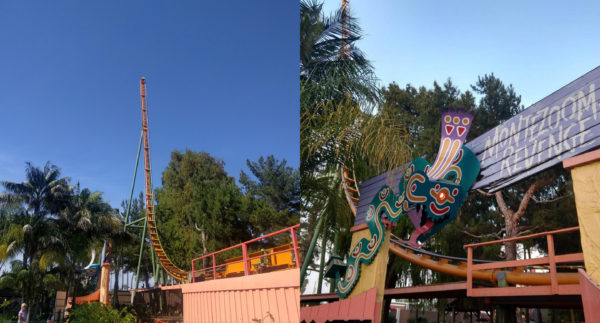
8. SooperDooperLooper at Hersheypark (1977)
We promise there are coasters built by other people on the list, but at this point, it should be pretty obvious that Anton Schwarzkopf was one of the greatest roller coaster designers of all time. Opened in 1977, built by Schwarzkopf and designed by Werner Stengel, SooperDooperLooper was the first looping coaster on the East Coast. It’s easy to accidentally overlook the classic coaster in Hersheypark’s massive coaster lineup with rides like Skyrush, Storm Runner, and now Candymonium, but we think it’s in the top-half of Hershey’s steel coasters. While the loop stands-out for historic significance again, like with Revolution I actually love it for the way it integrates with the terrain and the other rides. The tunnel in the middle and the helix built down into the hill to end the ride are my favorite parts for sure. It goes to show that a good design can stand the test of time.
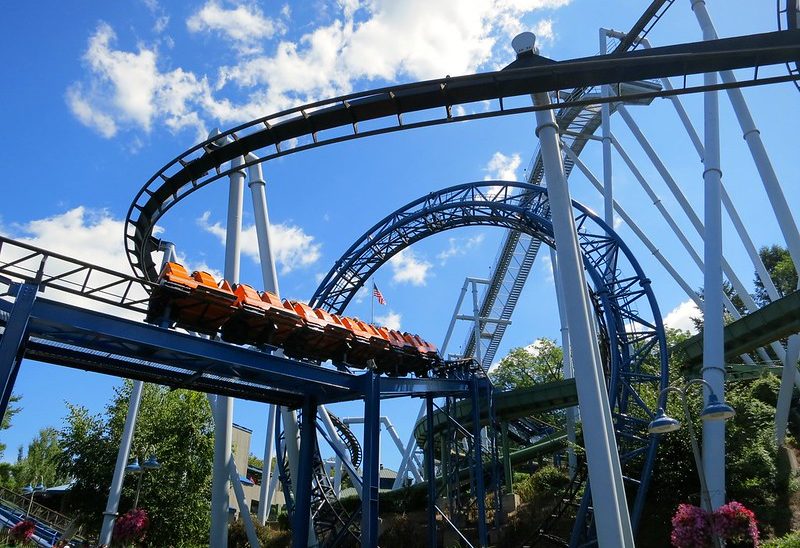
7. Big Thunder Mountain Railroad at Disneyland (1979)
Big Thunder Mountain Railroad at Disneyland just sneaks into the 1970s, opening in September of 1979, a year before the Florida version. The third of the Disneyland “Mountain” roller coasters, it’s generally a family-friendly mine-train coaster, but the lateral g’s through the banked twists and pack a lot of fun into the space. The uses of three separate lifts also make give it a lot more to work with. Big Thunder is probably the most detailed from a design point of view of all the Disney coasters, and the beautifully built terrain, animatronics, and special effects all amp up the ride.
While Disneyland’s Big Thunder isn’t the best version of it — that’s probably in Paris — we’d be lying if we said we didn’t love it. It’s often the coaster I ride the most when I’m at the park. And since like most Disney rides it gets regular love and refurbishment, there’s no worry of it going downhill. Plus, who doesn’t love a dynamite goat?
6. Gemini at Cedar Point (1978)
The fourth oldest coaster out of Cedar Point’s impressive collection of 17, it’s easy to see how Gemini would probably get lost in the shuffle in its own park. However, this unique racing coaster from Arrow Dynamics is a true classic from Ron Toomer. You truly don’t know which side will win the race each time, and if you really want to congratulate the other racers during the course, you can reach out with a high five, something mostly impossible on any other racing roller coaster.
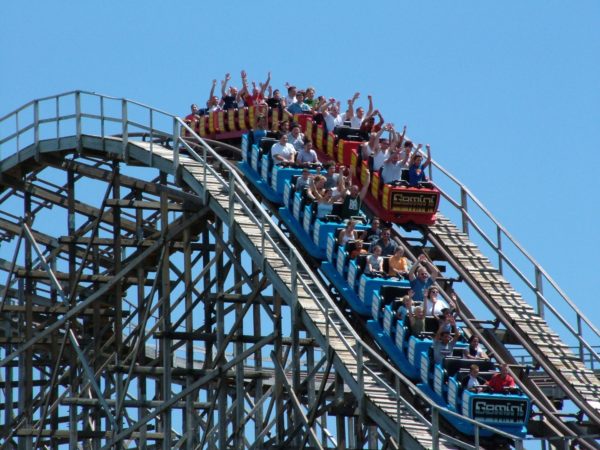
Gemini at Cedar Point (courtesy Wikimedia Commons)
Despite more than 40 years of operation, Gemini is an incredibly smooth ride, and one that you could marathon for hours at Cedar Point if you wanted to. And if you can’t make it to Cedar Point, there’s probably a chance that you can find a virtual version of Gemini in an arcade or shopping mall as part of the “Kiddie Coaster” simulator.
5. The Racer at Kings Island (1972)
We knew we had to include at least one of the classic John C. Allen/Philadelphia Toboggan Company wooden coasters of the 1970s, so we decided to go with the original. We talked a bit in our recent history of the wooden coaster “family tree” about how important Racer was to the modern wooden coaster. This was really the ride that started the coaster renaissance in 1972, and it was the signature attraction of Kings Island when it opened in 1972.
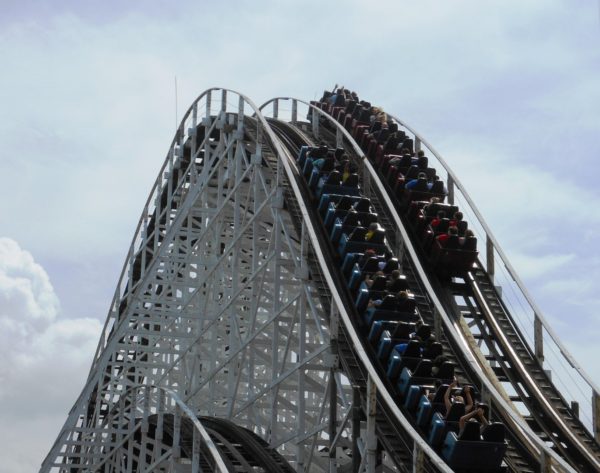
Racer is about as classic a design as you can get, with a beautiful, long out-and-back layout filled with small airtime hills. The concept to split the track at the far end of the coaster and then bring them back together was a first-of-its-kind for a racing coaster, though. It raced forward for the first decade of its life, and then for most of the 80s and 90s, it raced with one side running backward. In 2008 Cedar Fair returned the ride to both forward-facing and added the distinctive red and blue colors to the competing sides. The American Coaster Enthusiasts awarded it landmark status in 2007, and the Racer is still racing great today.
4. Mind Bender at Six Flags Over Georgia (1978)
Thrilling Six Flags Over Georgia guests for more than four decades, Mind Bender has retained its status as a top-tier Schwarzkopf looping coaster. We like it so much, it’s actually our #3 coaster at Six Flags Over Georgia overall, beating our plenty of more modern rides. The coaster is situated in a ravine and is partially hidden by the park’s lush tree canopy. Guests traveling from the parking lot to the park entrance will hear the roaring train as it careens through the 3,253-foot-long course.
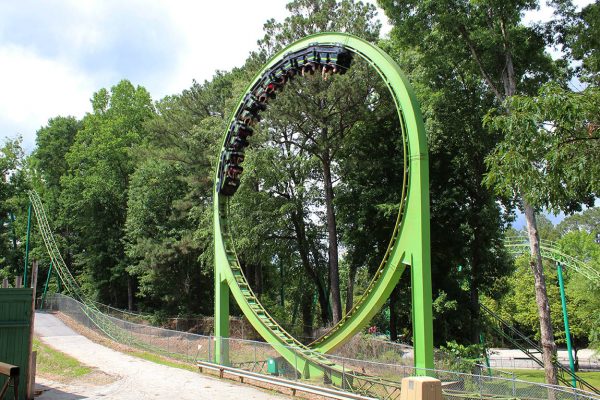
Claimed to have the world’s first “triple loop,” Mind Bender by definition only turns riders upside down twice — both are standard vertical loops. The third “loop” is more like a banked helix. Technicalities aside, this neon-green coaster is fun from start to finish, maintaining its speed and intensity from the first drop to the brake run. Plus, the lap-bar-only restraints make for a comfortable ride, a rarity for older looping coasters.
In a testament to the popularity and staying power of Mind Bender, Six Flags Over Georgia is performing an extensive rehab of the coaster’s track in 2020 and will reopen it in 2021 as “The Riddler Mindbender.”
3. Space Mountain at Walt Disney World and Disneyland (1975 and 1977)
OK, so, we’re cheating a little bit here, and in a couple ways. We know the two Space Mountains are pretty different, and we know that Disneylands Space Mountain got a pretty major overhaul, but we couldn’t decide which to include, so we decided to cheat. Feel free to complain in the comments. But, in the meantime, let’s talk about why both versions are great!
On the East Coast, Space Mountain is a clear descendant of the Matterhorn (one of our favorite 50+ year old coasters). It has similar bobsled trains, and like the Matterhorn has two separate sides. In this case, the Alpha and Omega sides are mirror images of each other, but having two tracks allows for some fun effects.
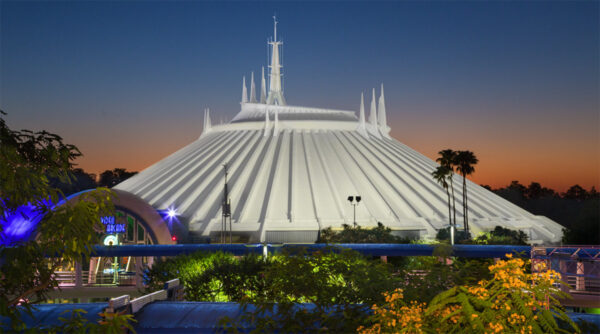
The West Coast version opened in 1977, with a major overhaul from 2003 to 2005. The track was fully replaced during that refurbishment, BUT, the layout stayed the same as it was originally. Unlike in Florida, there is only a single track at Disneyland, and the trains are two across models that tend to offer a much smoother ride than the bobsled style. Plus, Disneyland has the awesome soundtrack.
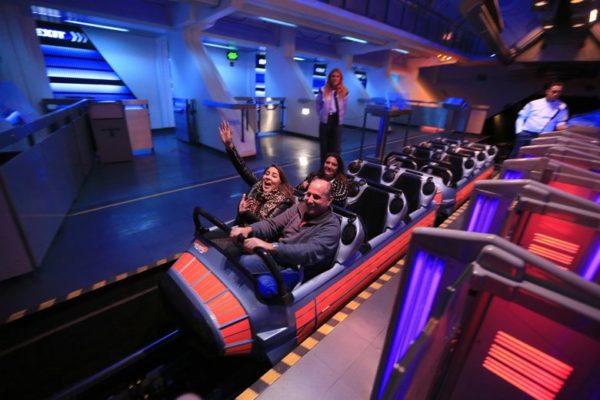
Disneyland Space Mountain Trains (Allen J. Schaben/Los Angeles Times/TNS)
But, what makes Space Mountain great is the same in both places. The rides’ use of darkness and effects, combined with an excellent layout, makes them feel way more intense than they actually are. Would you believe that the Disneyland Space Mountain only reaches 35 mph, and the WDW version is even slower, at 28 mph??? Space Mountain is maybe the best example of how to make a roller coaster “feel” fast and intense without actually needing it to be tall or fast.
This quote from an article in Trip Savvy by the great Arthur Levine I think sums it up perfectly: “Big Thunder Mountain Railroad is 9 mph faster than Space Mountain. Without the indoor coaster’s canopy of darkness, however, Thunder Mountain somehow feels slower.”
2. Loch Ness Monster at Busch Gardens Williamsburg (1978)
Loch Ness Monster seems to show up on Coaster101 a lot. It was our second favorite Arrow Looping Coaster still running when we made that list last year. We made a solid argument for why it’s the best roller coaster at Busch Gardens Williamsburg. We highlighted 40 awesome facts about it for its 40th anniversary. It’s safe to say we love Loch Ness Monster.
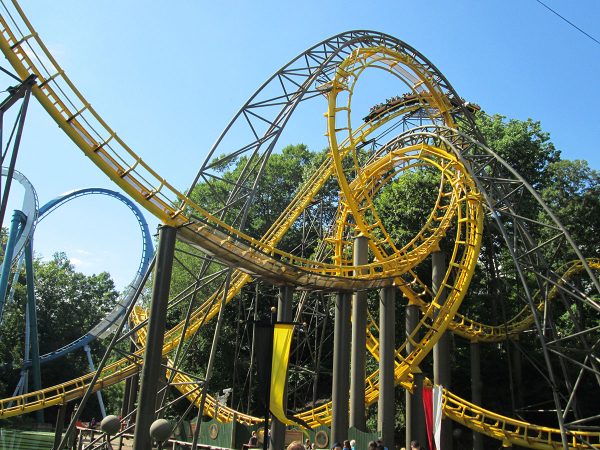
I think the first thing that stands out about it is how smooth a ride it is. Most Arrow Loopers, and certainly the old ones, are painfully rough, even the ones we like. Loch Ness, somehow, isn’t. No idea if that’s excellent maintenance by the BGW team, or something about the layout, or something else (it did have new trains installed in 2018, but we liked it even before that!). But, whatever it is, it’s held up better than any other old Arrow coaster out there, so we love its history.
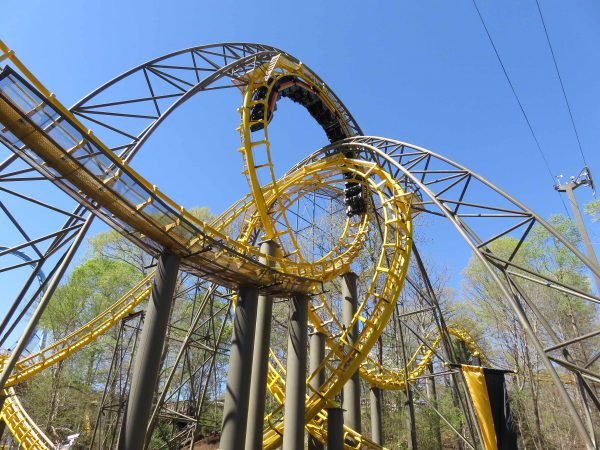
The layout of Loch Ness also stands out compared to similar era Arrow loopers. The interlocking loops — the only in the world — is one of the most iconic elements on any roller coaster. The massive enclosed helix — I think it makes 2.75 revolutions, or 990 degrees! — was one of the most surprising elements I’ve ever experienced on a coaster. It goes on MUCH longer than most modern helices. When the special lighting effects and sounds that the park added for the 40th anniversary are on it’s even better.
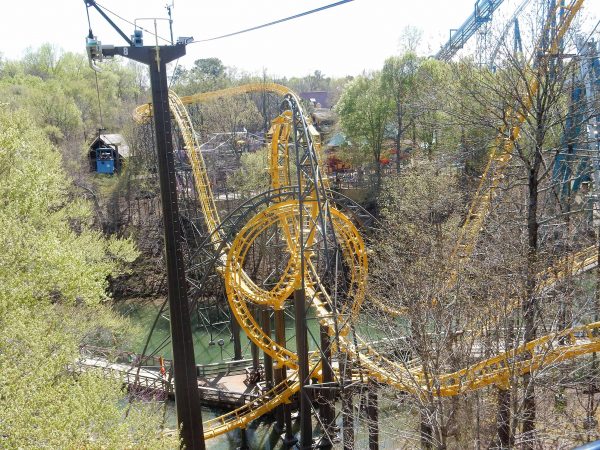
Lastly, like most Busch Gardens Williamsburg coasters, it uses the terrain really well and adds a nice bit of theming. Placing the loops at the bottom of the lake, hiding the helix in a cave in the woods, and throwing little props into the queue are all little touches that elevate the ride to our second favorite of the 1970s.
1. The Beast at Kings Island (1979)
Finally, we reach number one, and it’s probably no surprise. The Beast is arguably the best wooden coaster in the world, period, so it’s not really a surprise that it’s our top coaster from the 70s still running today. The Beast remains the longest wooden roller coaster in the world, over 7000 feet in length and over 4 minutes in time. When it opened it also held records for tallest (110 feet), longest drop (141 feet), and fastest (64.8mph) wooden coaster. While it doesn’t hold all those records today, it still speaks to how much of a monster this ride is. Check out our behind the scenes tour from many years ago.
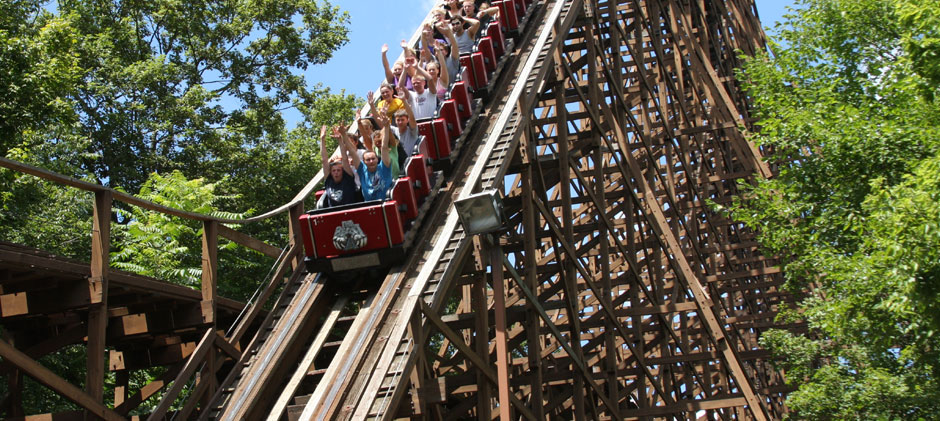
The beauty of The Beast is that almost all of that huge track is completely hidden from you until you’re on the ride. It winds its way deep into the Ohio woods, not only going way back from the rest of the park, but staying low to the ground beneath the treeline as it goes through airtime hills, tunnels, and high-speed straightaways. Then you climb the second lift hill — which was also completely hidden — and go into the beautiful long but shallow drop. Generally, shallow drops aren’t viewed positively on roller coasters, but I love the way you slowly build up speed, with the track ever so gradually banking, until you find yourself hurtling towards the crossover and into the giant, enclosed double helix.
Now, take that trip deep into the woods with its low to the ground action and turns, and do it at night, and you’ve got almost a perfect roller coaster.
Honorable Mentions
That’s our top-10 from the 1970s still running today, but we did want to throw in some honorable mentions. These are rides we all like, but either didn’t quite make it, or not enough of us had ridden them to include above.
- Whizzer: This was the nostalgia pick for those of us who grew up going to a Great America park. One of only two of its model still in the world, we love the Whizzer at Six Flags Great America and it just missed out on making the top-10.
- Blazing Fury: The unique dark-ride/coaster hybrid at Dollywood is definitely a cool experience. It’s one of our favorite rides under 35 mph and a great piece of history. Be sure to check out our behind-the-scenes look at it.
- Racer 75 and Screamin’ Eagle: The Coaster101 team was mostly divided on our favorite of the classic PTC wooden coasters. We decided to go with Racer at Kings Island on the list, but we’re definitely fans of its sibling coasters, like Racer 75 at Kings Dominion and Screamin’ Eagle at Six Flags St. Louis.
- Arrow Mine Trains: They’re not our favorites of all time, but we wanted to give a shoutout to Arrow Mine Trains, like Cedar Creek Mine Ride at Cedar Point (technically a 1960s coaster) and Carolina Gold Rusher at Carowinds. They’re maybe not the best coasters out there, but they’re always enjoyable. Check out our recent feature about the two (non-70s) Mine Trains at Six Flags Fiesta Texas.
Those are our top 10 coasters from the 1970s still operating. What do you think? Did we nail it, or did we completely mess it up? Let us know in the comments what your favorite 1970s coaster is, or tell us on Facebook or Twitter.

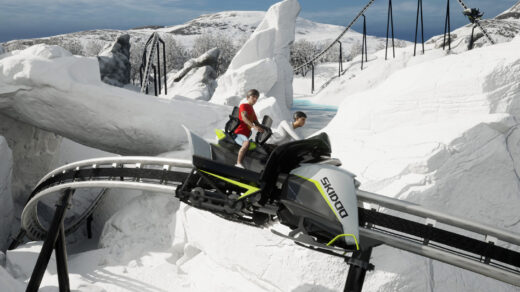
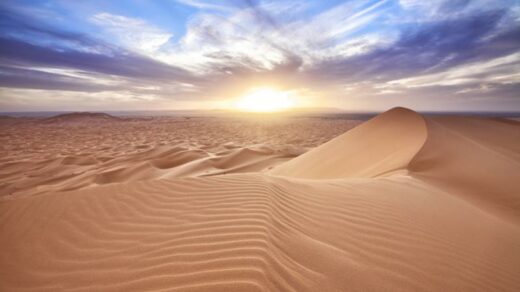
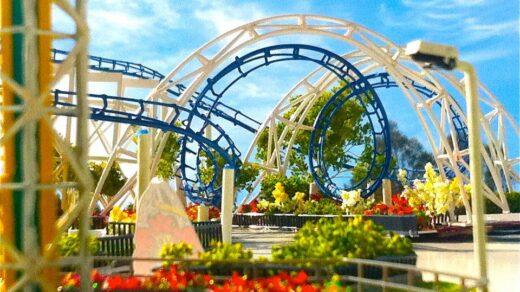





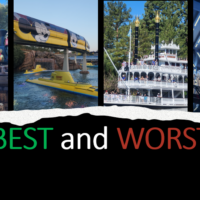




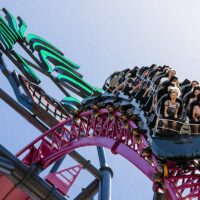
This is a fantastic list! You nailed it with #1. I’ve visited countless parks and been on more roller coasters than I can count, and The Beast (especially at night) is by far and away my favorite.
Great list of 70’s roller coasters, but we can’t forget The Cyclone in Coney Island. It’s probably the only roller coaster from the 20’s still running. A great coaster.
It definitely is! It’s on our list of our 10 favorites over 50 years old 🙂
https://www.coaster101.com/2019/02/14/10-awesome-historic-coasters-over-50-years-old-and-still-operating/
You left out rolling thunder at six flags great adventure in New Jersey
Rolling Thunder is, sadly, no longer standing. It was demolished in 2013.
From what I’ve read, those loops on those old school Schwarzkopf loopers are quite intense!
The ones on the shuttle loop coasters like Montezooma’s Revenge definitely are!
I still prefer the g’s on Shockwave at Six Flags over Texas those are some strong wicked grey out G’s.
The loop on Revolution still packs the G forces it did when I first rode it in 1976. I like that the loop is in the middle of the ride so there’s a build-up to get to it. The gradual slope toward the loop was genius. And removing those unnecessary OTSRs was one of the best things they did.
I think Loch Ness should be #1… my grandmother rode that coaster up till her late 60’s…
Surprised you left off Shockwave at Six Flags over Texas. Having included the Revolution, Mindbender and SuperDooperLooper…Shockwave merits an honorable mention at the very least. Also, both Demon’s at the Great America Parks should get honorable mentions as well…given they were the 2nd Arrow corkscrew coasters ever built as the Turn of the Century in 1976…many Arrow corkscrew/loop coasters have come and gone in their lifetimes, but they have also stood the test of time.